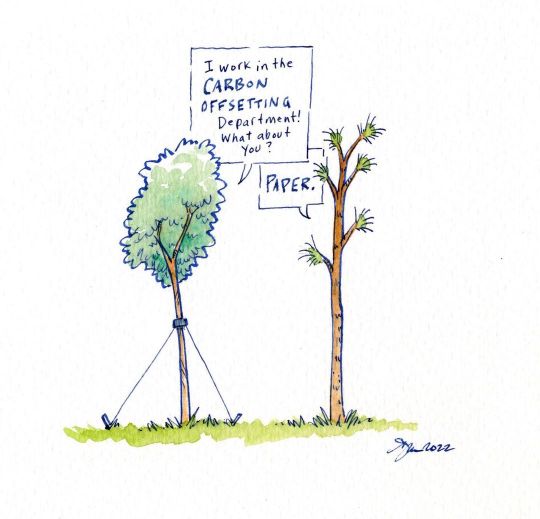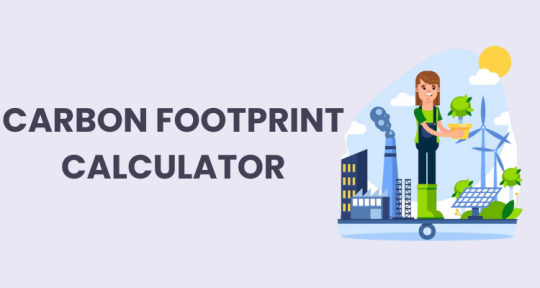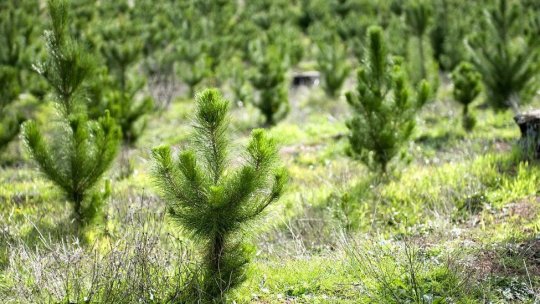#carbonoffset
Text
Sustainable Travel: Booking Eco-Friendly Flights
For more features please visit https://trailtravelz.com/
In an era where environmental consciousness is becoming increasingly imperative, sustainable travel has emerged as a crucial consideration for conscientious globetrotters. With the tourism industry contributing significantly to carbon emissions and ecological degradation, travelers are seeking ways to minimize their environmental footprint. One area where individuals can make a tangible difference is in the way they book flights. By opting for eco-friendly airlines and adopting sustainable travel practices, travelers can mitigate the environmental impact of their journeys and contribute to the preservation of our planet.
The Environmental Impact of Air Travel
Air travel is undeniably convenient, connecting people across continents and cultures in a matter of hours. However, this convenience comes at a significant environmental cost. Commercial aviation is responsible for a substantial portion of global carbon emissions, with aircraft releasing greenhouse gases such as carbon dioxide and nitrous oxide into the atmosphere. Additionally, the aviation industry contributes to other forms of environmental degradation, including noise pollution, air pollution near airports, and habitat destruction due to airport expansion.
The Rise of Eco-Friendly Airlines
Recognizing the need for sustainable alternatives, an increasing number of airlines are implementing eco-friendly initiatives to reduce their environmental impact. These initiatives range from investing in fuel-efficient aircraft and alternative fuels to implementing carbon offset programs and reducing single-use plastics onboard. Additionally, some airlines are incorporating sustainable practices into their operations, such as waste reduction and recycling programs.
How to Book Eco-Friendly Flights
When planning your next trip, consider the following tips for booking eco-friendly flights:
1. Research Eco-Friendly Airlines:
Before booking your flight, research airlines that prioritize sustainability and environmental responsibility. Look for carriers that have implemented initiatives to reduce their carbon footprint, such as investing in fuel-efficient aircraft or offsetting carbon emissions through reforestation projects.
2. Choose Direct Flights:
Opting for direct flights whenever possible can significantly reduce your carbon footprint. Takeoffs and landings are the most fuel-intensive phases of a flight, so by choosing non-stop routes, you can minimize the environmental impact of your journey.
3. Offset Your Carbon Emissions:
Many airlines offer carbon offset programs that allow travelers to mitigate the environmental impact of their flights by investing in projects that reduce or capture greenhouse gas emissions. Consider offsetting your carbon emissions when booking your flight to support renewable energy, reforestation, or other sustainable initiatives.
4. Pack Light:
Packing light not only saves you money on baggage fees but also reduces the weight of the aircraft, resulting in lower fuel consumption and emissions. Pack only the essentials and opt for reusable or eco-friendly travel accessories to further minimize your environmental impact.
5. Support Sustainable Practices:
Choose airlines that prioritize sustainable practices throughout their operations, such as minimizing single-use plastics, implementing waste reduction programs, and supporting local communities at destination airports. By supporting environmentally responsible airlines, you contribute to the growth of sustainable tourism and encourage industry-wide adoption of eco-friendly practices.
Conclusion
As travelers, we have a responsibility to minimize our environmental impact and preserve the planet for future generations. By booking eco-friendly flights and adopting sustainable travel practices, we can reduce the carbon footprint of our journeys and contribute to the protection of fragile ecosystems around the world. By making informed choices and supporting airlines that prioritize sustainability, we can travel with a clear conscience, knowing that we are doing our part to create a more sustainable future for all.
#SustainableTravel#EcoFriendlyFlights#CarbonOffset#GreenAviation#SustainableTourism#AirlineSustainability#ReduceCarbonFootprint#TravelResponsibly#EnvironmentalConsciousness#FlightEmissions
0 notes
Text
Sustainable Travel: How Your Flight Ticket Booking Choices Impact the Environment
In an era where environmental consciousness is increasingly at the forefront of public discourse, the impact of travel on the planet has come under scrutiny. While travel broadens our horizons and fosters cultural exchange, it also leaves a significant carbon footprint, particularly air travel. As individuals become more aware of their ecological footprint, the concept of sustainable travel is gaining traction. One crucial aspect of sustainable travel is understanding how our flight ticket booking choices can affect the environment.
For more features please visit https://trailtravelz.com/
Air travel is one of the fastest-growing sources of greenhouse gas emissions, contributing to climate change and environmental degradation. According to the International Air Transport Association (IATA), aviation accounts for approximately 2% of global carbon dioxide emissions, and this figure is expected to rise significantly in the coming years if no action is taken. The environmental impact of flying is not limited to carbon emissions; it also includes noise pollution, habitat destruction, and air quality deterioration near airports.
When it comes to booking flight tickets, there are several factors to consider in minimizing your environmental impact:
Choose Direct Flights: Direct flights are more fuel-efficient than connecting flights since takeoffs and landings consume a significant amount of fuel. By opting for direct flights whenever possible, you can reduce your carbon footprint.
Fly Economy Class: Business and first-class seats take up more space per passenger, resulting in higher emissions per capita. By flying economy class, you can reduce your individual carbon footprint.
Consider Alternative Modes of Transportation: For short-haul journeys, consider alternatives to flying, such as trains or buses, which have lower carbon emissions per passenger mile.
Choose Airlines with Environmental Initiatives: Some airlines are more committed to sustainability than others. Research airlines that have implemented measures to reduce their carbon footprint, such as investing in fuel-efficient aircraft, carbon offset programs, or using sustainable aviation fuels.
Offset Your Carbon Emissions: Many airlines and third-party organizations offer carbon offset programs, allowing travelers to invest in projects that reduce greenhouse gas emissions, such as reforestation or renewable energy initiatives.
Pack Light: The heavier the aircraft, the more fuel it consumes. Packing light not only saves you money on baggage fees but also reduces the overall weight of the plane, resulting in lower fuel consumption and emissions.
Reduce, Reuse, Recycle: Minimize waste during your journey by bringing a reusable water bottle, opting for electronic boarding passes, and avoiding single-use plastics.
Support Sustainable Tourism Practices: Choose eco-friendly accommodations, tour operators, and activities that prioritize environmental conservation and community engagement.
By making conscious choices when booking flight tickets, travelers can play a significant role in reducing the environmental impact of their journeys. While individual actions may seem small in the grand scheme of things, collective efforts can lead to meaningful change.
In addition to considering the environmental impact of flight ticket booking choices, it is essential to advocate for systemic changes within the aviation industry and government policies to promote sustainability. This may include incentivizing the development and adoption of cleaner aviation technologies, investing in public transportation infrastructure, and implementing regulations to limit emissions from air travel.
As travelers become more aware of the environmental consequences of their actions, there is a growing demand for sustainable travel options. By prioritizing sustainability in flight ticket booking decisions and supporting initiatives that promote environmental responsibility, we can work towards a more sustainable future for travel and protect the planet for generations to come.
#SustainableTravel#FlightBooking#EnvironmentalImpact#CarbonFootprint#AirTravel#CarbonOffset#EcoFriendly#Sustainability#TravelTips#GreenTravel
0 notes
Video
youtube
Will the carbon offset markets be enough to cover 50 Billion Tons of CO2...
#youtube#CarbonOffset#ClimateChange#CarbonMarket#CO2Emissions#EnvironmentalImpact#Sustainability#ClimateSolutions#CarbonNeutral#GreenTechnology#RenewableEnergy#CarbonTrading
0 notes
Text

Did you know that planting trees is one of the most effective ways to offset your carbon footprint? 🌴 🌳 👩🌾 It's an easy and impactful way to reduce your impact on the environment, and get a nice trophy on top! 🏆
Simply exchange your points for a tree coupon from Grow My Tree to complete the march 𝗧𝗿𝗲𝗲 𝗖𝗵𝗮𝗹𝗹𝗲𝗻𝗴𝗲 and do something good for mother nature. Thank you! 🙏
0 notes
Photo

Can millions of genetically modified trees slow climate change?
Planting a tree, as environmental solutions go, comes in and out of fashion.Read more...
https://qz.com/living-carbon-genetically-modified-trees-climate-change-1850163716
#greenhousegasemissions#renewableenergy#vincestanley#treeplanting#andrewmorrislatimer#carbonfinance#stevestrauss#chemicalcompounds#davis#environment#nature#climatechangepolicy#richardnixon#carbonneutrality#maddiehall#naturalenvironment#geneticallymodifiedtree#carbonoffset#forestmanagement#Tim Fernholz#Quartz
0 notes
Photo

The amount of CO2 a person produces per year can vary greatly depending on several factors such as their location, lifestyle, and mode of transportation. However, on average, an individual in a developed country can emit anywhere from 5 to 20 metric tons of CO2 per year. This can include emissions from transportation, energy usage in their home and workplace, and the production of goods and services they consume. It is important to note that reducing our personal carbon footprint is an important step in the fight against climate change. Join us as a carbon-conscious startup and let's create a greener future together!🌳🌍 ⠀⠀⠀⠀⠀⠀⠀⠀⠀ #ForACoolerFuture #NordicNetZero #CarbonCredits #SustainableBusiness #ClimateSolution #CarbonNeutral #EcoFriendlyBusiness #ClimateActionNow #GoGreenWithUs #SustainableLiving #CarbonOffset #CleanEnergyNow https://www.instagram.com/p/CoZM9HhLMze/?igshid=NGJjMDIxMWI=
#foracoolerfuture#nordicnetzero#carboncredits#sustainablebusiness#climatesolution#carbonneutral#ecofriendlybusiness#climateactionnow#gogreenwithus#sustainableliving#carbonoffset#cleanenergynow
0 notes
Photo

Xylopyrography- the art or process of producing a picture on wood by burning it with a hot instrument of iron, platinum, or the like FOR SALE! $45 ($100 framed) free shipping US and Canada. Comment or message if interested. - Platinum Blue Pigment ink Lamy Al-Star 1.5 nib Monteverde Ritma 1.1 nib Opus 88 Cinco de Mayo EF nib - - - - #carbonoffset #plantingtrees #trees #art #artist #artistsoninstagram #illustrationartists #penandinkchallenge #comicstrip #drawing #watercolor #ink #comics #fountainpen #cartoon #word #wordofthedaybymatt #wordoftheday #instaart #buyart #collectart #dailyart #inktober … https://www.instagram.com/p/CgCSBeBAUN0/?igshid=NGJjMDIxMWI=
#carbonoffset#plantingtrees#trees#art#artist#artistsoninstagram#illustrationartists#penandinkchallenge#comicstrip#drawing#watercolor#ink#comics#fountainpen#cartoon#word#wordofthedaybymatt#wordoftheday#instaart#buyart#collectart#dailyart#inktober
0 notes
Text
Web3 Revolutionizing Climate Action: Sustainable Solutions in Carbon Markets

One of the biggest problems facing humanity in the twenty-first century is climate change.The science is clear: if we want to avoid the worst consequences of global warming, we must dramatically reduce our greenhouse gas emissions. However, this is not easy to achieve, as it involves transforming the way we produce and consume energy, as well as the way we do business.
Fortunately, technology can be a great ally in this fight. In particular, Web3 technology, which is based on the use of decentralized networks, open protocols and cryptocurrencies, is revolutionizing sustainable energy markets. Web3 offers innovative solutions to manage and trade carbon credits, incentivize the reduction of emissions and offset the carbon footprint.
The goal of this article is to explore how Web3 and blockchain technology are transforming sustainability, focusing on carbon trading and efficient emissions management. We will also look at some practical examples of how Web3 is driving the growth of voluntary carbon markets and facilitating peer-to-peer energy trading.
Web3 and the Sustainable Revolution
Web3 is a term used to describe the evolution of the web towards a more open, participatory and democratic platform. Web3 is based on the use of technologies such as blockchain, smart contracts, tokens and oracles, which allow the creation of decentralized applications (DApps) that work without intermediaries or central authorities.
These technologies have allowed us to develop sustainable solutions in areas such as renewable energy and carbon capture. Projects like Power Ledger allow users to generate and sell solar energy through a blockchain platform; o CarbonX uses tokens to reward consumers for reducing their carbon footprint.
However, these solutions are not without challenges. One of them is the volatility in the value of Web3-related assets, such as cryptocurrencies or tokens. These assets can experience strong fluctuations due to factors such as supply and demand, speculation or regulations. For example, there has recently been a 70% drop in the value of some Web3 assets, which has negatively affected their adoption and credibility.
However, it is important not to lose sight of the technological advances underlying these solutions, as they are what can really make a difference in the transition to a low-carbon economy. Web3 development company offers a unique opportunity to create a more transparent, efficient and inclusive system for managing and trading carbon credits.
Blockchain and Carbon Credit Management
Carbon credits are units that represent one ton of carbon dioxide (CO2) equivalent that has been avoided or removed from the atmosphere. Carbon credits can be generated through projects that reduce or capture greenhouse gas emissions, such as planting trees, installing solar panels, or capturing methane.
Blockchain technology is being used to address climate change, managing carbon credits and reducing emissions. Blockchain is a technology that allows the creation of distributed and immutable records of transactions, without the need for intermediaries or central authorities. Blockchain offers advantages such as transparency, traceability, security and efficiency.
Blockchain simplifies the integration of renewable energy, enabling efficient carbon trading and a financial incentive for emissions reduction. Projects like WePower use blockchain to connect producers and consumers of green energy, facilitating access to carbon credits; o Nori uses blockchain to create a carbon removal market, rewarding farmers for sequestering CO2 in the soil.
Web3 and Carbon Offsetting
Carbon offsetting is a practice of offsetting greenhouse gas emissions that cannot be avoided or reduced by investing in projects that eliminate or prevent them. Carbon offsetting can be done through mechanisms such as the Clean Development Mechanism (CDM) or the Gold Standard.
Web3 revolutionizes the carbon offset market, providing transparency and reducing risks. Web3 allows you to create decentralized carbon registries, which verify and validate the carbon credits generated by offset projects. These records can be audited by anyone, increasing trust and credibility.
Additionally, Web3 makes it easier for both suppliers and buyers to access and participate in the carbon offset market. Web3 allows you to create platforms that directly connect the actors involved, without intermediaries or commissions. Web3 also allows you to create tokens that represent carbon credits, making them easier to trade and use.
A practical example of how Web3 is applying carbon management is the partnership between the Energy Web Foundation and Vodafone. Energy Web Foundation is a non-profit organization that develops blockchain solutions for the energy sector. Vodafone is a multinational telecommunications company. Together they have created a blockchain platform that allows users to verify and certify their emissions and compensation actions
Peer-to-Peer Energy Trading on Blockchain
Peer-to-peer energy trading is a form of trading in which users can buy and sell energy directly with each other, without intermediaries or centralized networks. Peer-to-peer energy trading can improve the efficiency, resilience and sustainability of the energy system.
Blockchain is taking peer-to-peer energy trading to a new level, enabling direct and decentralized trading. Blockchain allows the creation of intelligent networks (smart grids) that connect users with renewable energy sources, such as solar panels or wind turbines. These smart grids can adjust energy supply and demand in real time, optimizing usage and price.
In addition, blockchain allows the creation of tokenization solutions and smart contracts, which facilitate energy trading and payment. Tokenization consists of converting an asset or right into a digital token that can be exchanged on a blockchain platform. Smart contracts are self-executing agreements that are activated when certain conditions are met.
An example of how blockchain is innovating tokenization and smart contracts is Veridium and its partnership with IBM. Veridium is a company that offers solutions to measure, manage and offset carbon emissions. IBM is a leading technology and innovation company. Together they have created a blockchain platform that uses tokens to represent carbon credits and smart contracts to automate their buying and selling.
Beyond Cryptocurrencies: Potential of Web3
Web3 and blockchain are much more than cryptocurrencies. These technologies have the potential to transform various economic sectors, such as health, education, transportation or agriculture. Web3 offers solutions to improve the quality, accessibility and efficiency of services, reduce costs and risks, and promote inclusion and equity.
It is important to comprehensively understand the transformative potential of these technologies for the business landscape. Web3 and blockchain can change the rules of the game, creating new business opportunities, but also new challenges and risks. Therefore, it is essential to be prepared and adapt to this transformation
Digitalization and Growth in the Voluntary Carbon Market
Digitization is a process that consists of converting analog information into digital format. Digitization can improve security and transparency in the carbon market by creating immutable and verifiable records of carbon credit transactions.
Digitalization can also drive the growth of voluntary carbon markets by supporting genuine sustainability initiatives. Voluntary carbon markets are those in which actors decide to offset their emissions on their own initiative, without being bound by international standards or agreements.
Digitalization can make it easier for both suppliers and buyers to participate in voluntary carbon markets. Digitalisation can simplify the carbon credit verification and certification process, reduce costs and time, and increase trust and credibility.
Final conclusion
In this journey through the Web3 revolution and blockchain technology in the field of sustainability, a promising horizon is evident. Beyond cryptocurrencies, these emerging technologies are positioned as key catalysts in the fight against climate change and the creation of a green economy. The capacity for decentralization, transparency and efficiency that they offer becomes a beacon of hope.
Despite challenges, such as asset volatility, it is highlighted that these are temporary obstacles on the path to a more sustainable future. The responsible adoption of these innovations is presented as an ethical imperative, and its impact goes beyond the financial sphere, opening doors to transformation in diverse sectors such as health, education and agriculture.
At this crucial point in our history, collaboration between sectors is revealed as a determining factor. Active citizen participation stands as an essential driver for the success of these initiatives. Beyond technological effectiveness, it is crucial to remember that we are shaping a future in which ethics and social responsibility must be the pillars.
Looking forward, the vision encompasses a landscape where technology, environmental awareness and collaboration build a strong fabric for a more equitable and sustainable society. The mass adoption of Web3 and blockchain not only represents a technological revolution, but a revolution in the way we conceive and preserve our shared home: planet Earth.
This is the beginning of a new era, where innovation and consciousness intertwine to build a greener and more promising tomorrow. The invitation is clear: let us adopt these technologies wisely, forge strong alliances and together build a future where sustainability is more than a goal, it is the very basis of our progress.
#Web3#Blockchain#ClimateAction#Sustainability#CarbonMarkets#RenewableEnergy#Decentralization#GreenEconomy#Cryptocurrency#PeerToPeerTrading#CarbonOffsets#Digitalization#VoluntaryCarbonMarket#SmartContracts#TechForGood
0 notes
Text
Are Carbon Offsets Really Helping Fight Climate Change? Find Out Why Some Experts Are Skeptical
#carbonoffsets #climatechange #energyefficiency #greenhousegasemissions #renewableenergysources
#Politics#carbonoffsets#climatechange#energyefficiency#greenhousegasemissions#renewableenergysources
0 notes
Text
Carbon Dioxide Market Evolution: From Emissions Regulation to Renewable Energy Integration
The global carbon dioxide market size is expected to reach USD 15.46 billion by 2030, expanding at 5.0% CAGR from 2024 to 2030, according to a new report by Grand View Research, Inc. The growth is majorly driven by the increasing usage of CO2 for enhanced oil recovery (EOR) in oil & gas plants.carbon dioxide (CO2) is considered to be among the major and most extensively utilized medical gases. Furthermore, in the medical industry, CO2 is used in respiratory and cryotherapy stimulation during the process and post-anesthesia application. In cryotherapy, CO2 in frozen form (–78.5 °C) is used for killing body cells via a crystallization process. This gas can also be used in several processes to remove moles, skin tags, and warts.

Carbon Dioxide Market Report Highlights
Ethyl alcohol dominated the source type by accounting for a revenue share of 33.0% in 2023. It is projected to grow at the highest growth rate of 5.2% from 2024 to 2030 owing to its reliability as an easily available long-term source and high commercial value in producing CO2 as a by-product
Further, growth in demand for food-grade carbon dioxide in the forecast period will boost the growth of the production of carbon dioxide from ethyl alcohol
The food and beverages application segment of the market is anticipated to grow at a CAGR of 5.7% from 2024 to 2030, by revenue, thanks to rising demand for carbonated drinks globally
North America accounted for the largest revenue share of 42.0% of the CO2 industry in 2023. It is expected to continue its dominance over the forecast period. This can be attributed to increasing R&D, expansion of the industrial sector & growth of enhanced oil recovery processes
For More Details or Sample Copy please visit link @: Carbon Dioxide Market Report
CO2 also finds application in modern medicine to minimize invasive surgeries. In medicinal baths, it induces warm sensations and acts as a vasodilator for the skin by stimulating its heat receptors. In addition, insufflation with CO2 makes it easier to perform endoscopic procedures.
CO2 can be produced and recovered through various sources such as ethyl alcohol, hydrogen, ethylene oxide, substitute natural gas, and various other sources. Further, current research & development to capture carbon emissions has gained momentum. New research and development do not only aim to capture the CO2 in the form of carbon emissions but to refine and reuse it for some applications.
The carbon capture and storage (CCS) technology is capable of delivering considerable emission reductions from the utilization of fossil fuels. It is capable of lowering emissions from a wide range of industries such as power generation, steel, iron, refining, petrochemicals, and cement manufacturing. CCS technologies include capture, transport, and storage. Capture technology includes post-combustion, pre-combustion, oxy-firing, and industrial separation.
The key players in this industry are Air Products and Chemicals Inc.; Messer SE & Co. KGaA; Air Liquide; Linde Plc to maintain the market, share. Large firms frequently engage in mergers and acquisitions as well as new product launches. For instance, In September 2022, Covestro and SOL Kohlensäure GmbH & Co. KG signed a memorandum of understanding for collaboration in regards to the supply of biogenic CO2, effective from September 2022.
#CarbonDioxideMarket#CarbonDioxide#CO2#CarbonTrading#CarbonOffsets#CarbonCapture#EmissionsReduction#GreenEconomy#CarbonMarket#Decarbonization#ClimateFinance#LowCarbonFuture#EmissionsTradingSystem#CarbonFinance
0 notes
Photo

Carbon Footprint Calculator - Measure and Reduce Your CO2 Emissions
**Quantify Your Impact with Our Carbon Footprint Calculator!**
Ready to tread lightly on the planet? Our Carbon Footprint Calculator is your guide to understanding and reducing your carbon impact. Let's navigate through the steps to estimate your carbon footprint:
**How to Use the Carbon Footprint Calculator:**
Step 1: Enter Car Miles:
- Begin by entering the number of miles you drive in a car each year. This accounts for the emissions produced by your vehicle's fuel consumption.
Step 2: Input Electricity Usage:
- Provide your annual electricity usage in kilowatt-hours (kWh). This reflects the amount of energy consumed from non-renewable sources.
Step 3: Measure Waste Generated:
- Enter the quantity of waste you generate in pounds over a year. This includes materials contributing to landfill methane emissions.
Calculate Your Carbon Footprint:
- Click the "Calculate" button to compute your estimated carbon footprint.
**Real-time Example:**
Imagine someone driving 8,000 miles per year, using 5,000 kWh of electricity, and generating 600 pounds of waste. Upon calculation, their carbon footprint is approximately 7.43 metric tons CO2e per year.
**Take the First Step towards a Greener Future with Our Carbon Footprint Calculator** It's enlightening, actionable, and just a click away!
#calculatorcentral#carbonfootprintcalculator#carbonfootprint#calculatecarbonfootprint#environment#sustainability#climatechange#ecofriendly#carbonemissions#environmentalimpact#greentech#carbonreduction#sustainableliving#carbonfootprintanalysis#carbonoffsets#CarbonFootprint#EcoFriendlyLiving#CalculatorCentral#SustainableLifestyle#GreenCalculations
1 note
·
View note
Video
youtube
DMRV Roundtable - Frederic Fournier, Open Forest Protocol
#youtube#DMRV#Roundtable#FredericFournier#OpenForestProtocol#DigitalMarketing#MarketingStrategy#DigitalRevolution#Blockchain#ForestConservation#ClimateChange#CarbonOffset#EnvironmentalTech
0 notes
Text
#GoGreen#ClimateAction#Sustainability#ReduceCarbonFootprint#EcoFriendly#GreenLiving#CarbonNeutral#CarbonOffsetting#SaveThePlanet#ActOnClimate#EarthDayEveryday#life#wisdom
0 notes
Photo

Tree planting: Sowing complacency
Tree planting certainly seems like a wholesome, tidy way to make up for carbon emission. Take a flight? Plant a tree. Emissions: gone. But reforestation has gone from a radical political movement to a convenient corporate gimmick to encourage conscience-free consumption in the age of climate change. But not only is…Read more...
https://qz.com/tree-planting-program-carbon-offsets-1850150737
#treeplanting#environment#entertainment2cculture#dogmatix#google#lear#carbonfinance#afforestation#salesforce#forestry#eygmlimited#eygsllp#reforestation#emissionsreduction#naturalenvironment#carbonoffset#forestmanagement#deforestation#spotify#annalisamerelli#naturalresources#Quartz Staff#Quartz
0 notes
Photo

Trees play a crucial role in reducing CO2 levels in the atmosphere. They absorb carbon dioxide and release oxygen, making them an effective tool in the fight against climate change. By planting new trees, we're not only providing a home for wildlife, but also contributing to the health of our planet.. Let's work together to plant more trees and create a more sustainable world! 🌳🌍 ⠀⠀⠀⠀⠀⠀⠀⠀⠀ #ForACoolerFuture #NordicNetZero #CarbonCredits #SustainableBusiness #ClimateSolution #CarbonNeutral #EcoFriendlyBusiness #ClimateActionNow #GoGreenWithUs #SustainableLiving #CarbonOffset #CleanEnergyNow https://www.instagram.com/p/CoWqYFCLY6s/?igshid=NGJjMDIxMWI=
#foracoolerfuture#nordicnetzero#carboncredits#sustainablebusiness#climatesolution#carbonneutral#ecofriendlybusiness#climateactionnow#gogreenwithus#sustainableliving#carbonoffset#cleanenergynow
0 notes
Photo






Which view do you like better from above, Florida or NYC? 🏙🏝 Swipe to the last pic to see how I reduced the impact of these flights. Even though I’ve tried to fly less over the past few years and a pandemic has made that much easier, I haven’t been able to completely eliminate my air travel, which is obviously the best way to reduce the environmental impact of aviation. 🙅♀️✈️ And that’s where carbon offsets come in. If you can afford to fly, you can probably afford to offset your flight. (BIG UPDATE AT THE END OF THIS POST!) I’m a little overdue, but I just bought my carbon offsets for 2021. 🌱 For my one-way flight home to see family in Indiana and round-trip flight to visit my sister in New York, it cost me $12 to offset. That amount will go toward projects that are working toward environmental and social progress and will ultimately negate* the emissions I created by flying (*to the extent possible). 🌱 There are different places online to purchase carbon offsets, and some airlines will even let you add them to your cart when you purchase your ticket. For this, I used Terrapass.com’s carbon footprint calculator to figure out the emissions I created on my flights, and then I purchased an offset for that amount (roughly 1 metric ton) from @cooleffect_ 🌱 Moving forward, I am trying to get my travel fix by enjoying more local tourism and exploring my own state. Of course, road trips aren’t carbon neutral either, so I offset those emissions too! 🌱 UPDATE: After writing this post and buying my offsets, I wanted to see what the @delta sustainability policy was, since they’re who I flew with last year. And wouldn’t you know, they are already carbon offsetting all their flights rather than passing that responsibility on to the customer!! I would like to see them continue to put more effort into sustainability, but this is a great start! ✈️ 🏙 🏝 #explorida #roamflorida #florida #flstofmind #floridaliving #florida_greatshots #fun_in_florida #LoveFL #travel #airplane #carbonoffsets #sustainabletravel #ecofriendlytravel #delta #sustainability #viewfromabove #annamariaisland #newyorkcity #nyc (at SRQ International Airport) https://www.instagram.com/p/CYkMws_rua9/?igshid=NGJjMDIxMWI=
#explorida#roamflorida#florida#flstofmind#floridaliving#florida_greatshots#fun_in_florida#lovefl#travel#airplane#carbonoffsets#sustainabletravel#ecofriendlytravel#delta#sustainability#viewfromabove#annamariaisland#newyorkcity#nyc
0 notes